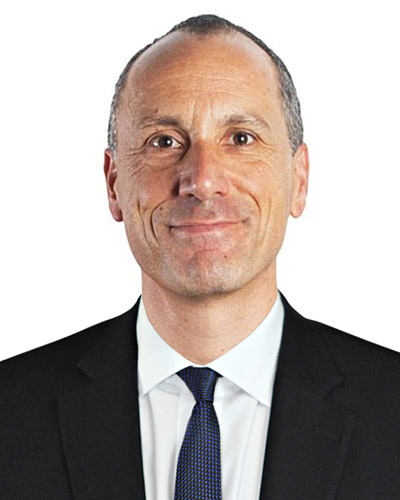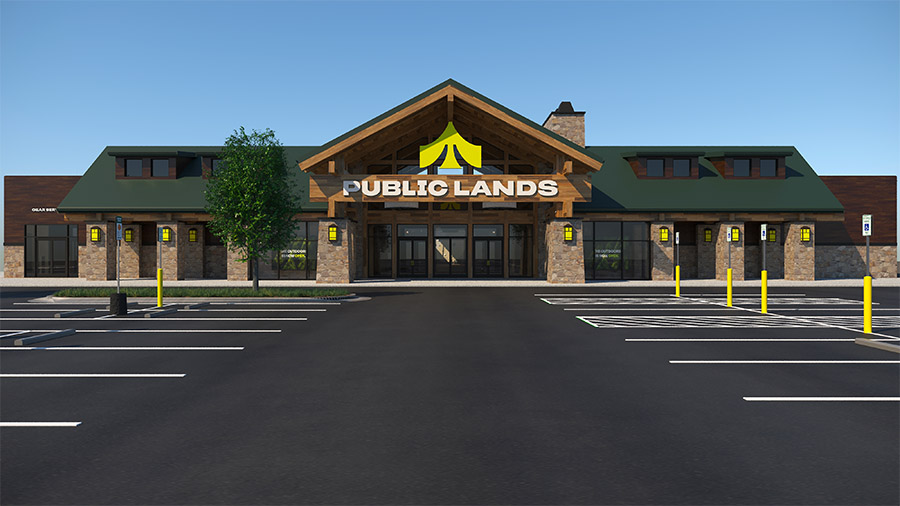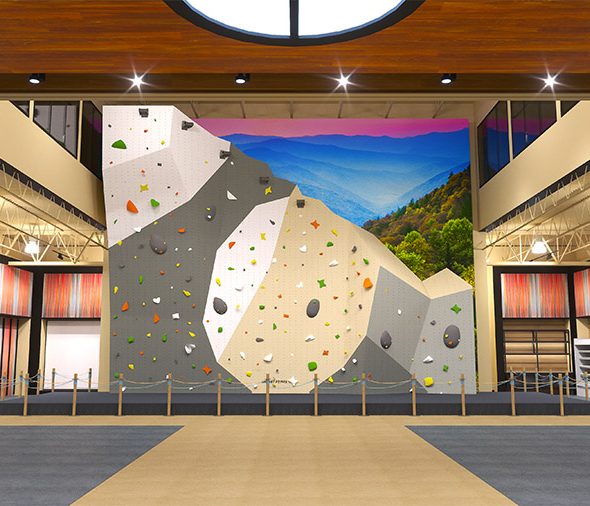By Thomas J. Ryan
Dick’s Sporting Goods, last fall, confirmed it would launch a new retail concept, Public Lands, to explore “white space” in reaching outdoor enthusiasts. By December, outdoor industry veteran Todd Spaletto was hired to lead the project.
In the coming months, the retailer plans to test the concept with two stores opening in Pittsburgh, PA (scheduled for September) and Columbus, OH (in October). Both stores will replace Field & Stream locations.

Spaletto, a 2009 SGB 40 Under 40 honoree, was previously president of The North Face and group president of Michigan Brands for Wolverine Worldwide. Here, he discusses with SGB Executive the vision behind Public Lands and how the pandemic has elevated the outdoor opportunity.
How did Public Lands first develop? What ‘white space’ did Dick’s see in the outdoors before the pandemic? Ed Stack and Dick’s Sporting Goods have thought about it for several years, and I had a conversation with Ed about it while working at The North Face. Two pillars drove it. The first, becoming more pronounced during the pandemic, are misperceptions around how the outdoors industry has represented the consumer.
The outdoor industry has characterized consumers as one of two things—you can be core, or you can be cool. If you’re core, you’re someone who can survive for two or three weeks in the woods by yourself and be perfectly fine. If you’re that person, you probably wear baggy cargo pants and wear forest green. You carry a wooden stick, binoculars and enjoy the slow and solitary outdoor experience. You know what you’re doing. Then, this other person may have the latest gear, the coolest brands, the best and brightest colors, and a strong sense of style. But, probably, a poser and doesn’t know what they’re doing in the outdoors. And that’s a misperception.
Whether it was the initial discussions that Ed and I had, and certainly in our consumer research that we’ve done with this project, that’s not true, especially with younger consumers coming into the outdoors. There is an element of being legit and technical and activity-based, but there’s an equal presence of style, and we don’t think that’s fully reflected from a retail experience.
The second key driver are values. Ed and Dick’s Sporting Goods have strong and passionate standards surrounding values—whether around youth sports with the company’s Sports Matter program or its push for sensible gun legislation. Dick’s thinks equal to that is the importance of our public lands. It’s important to remember that one-third of the United States is public lands. We have a responsibility to celebrate and protect those wild places, and that’s a core value for Ed, his family and Dick’s Sporting Goods. That’s an equal driver to why we started pushing this retail concept.
How has the pandemic changed the opportunity? The Outdoor Industry Association (OIA) released its COVID-19-participation report at the end of March that showed a surge from COVID of more consumers getting outside looking at outdoor activities to provide a physical and an emotional restoration in their lives. We see it in the rise of product sales and across participation points.
One of the exciting findings from the report is an increase in outdoor participation from younger people and females. It’s a more diverse consumer; it’s closer to home and closer to urban areas. We think that’s a great opportunity to drive increased participation to a broader community of outdoor enthusiasts, particularly when it’s happening across the United States.
We talk about the outdoors as the Sierras, the Cascades, the Rockies, and the Appalachian Trail. Our first two Public Lands stores are in Pittsburgh and Columbus, and we like that. There are fantastic places to get out and be outdoors in those markets, and I don’t think we talk about that as much in the outdoors as an industry. OIA’s participation report showed a surge in participation in areas and markets like those.
Who’s Public Lands’ target customer? For our consumer, the outdoors defines their lifestyle. But the big unlock is I think our industry has been very difficult in addressing that lifestyle. When we talk about the outdoors, it’s with ad campaigns and messages with people running, skiing and mountaineering and it’s all physical, physical, physical. And we think that our consumer certainly attaches to those physical activities but for our consumers, the outdoors is a place that is emotionally restorative. It’s a place that is creatively inspiring. Our consumer likes to go climbing or running or hiking or backpacking, but they also like reconnect with themselves above the tree line. Hiking is like their yoga. They like art, they like food, they like music, and being outdoors allows them to really tap into the creative ancillary parts of their life that we think is really amazing. So at the store level, I think you should expect to bring those different dimensions to life. You’re going to see things like music, art and food. We think that’s an opportunity for us to really celebrate our love for the outdoors that certainly includes technical gear but goes well beyond that.
What will the shopping experience be like at Public Lands stores? First, the stores are big—50,000 square feet—two to three times, if not more, the size of a typical outdoor store. Customers will find art and elements celebrating the creative dimension of the outdoor lifestyle. We are also emphasizing local. Sections of our stores will feature small business spotlights with local businesses. That might include honey or granola producers or an artist who lives an outdoor lifestyle and is helping us with a line of logo wear. We think that will keep us local, close to our communities and unique.
The layout is like eight specialty shops in one. There is a paddle shop, a fishing shop, climbing, hiking, and backpacking shops. The fishing shop is interesting. Not many outdoor stores offer fly fishing, but I remember catching up with friends at Outdoor Retailer in Salt Lake City and they’d often just been fly fishing. People in the outdoors love fly fishing, so we think that’s a great activity to invest in.
The stores will also have a significant climbing wall. We think that’s an opportunity not just to have an activity for people when they’re shopping, but we’re going to work hard to connect that to the local community, local climbing gyms and hopefully create new hobbies, habits and activities for people by connecting our business with like-minded community businesses.
The last unique aspect is our Gear Guide Center focused on rentals and repairs. We recognize that, for many people, the cost of entry to participate in the outdoors is high. I’m in Michigan, and we love to go snowshoeing in the winter. But I talked to someone recently who told me they always wanted to go snowshoeing but didn’t want to spend all the money for a pair of show shoes if they didn’t like it. So, it’s an endless unmovable speed bump with many outdoor activities. No one will participate unless they have a chance to get a low barrier of entry. We know that rentals are a great way for someone to have a first experience at a reasonable price. And, then, we think that one of the most sustainable things we can do is lengthen the lifecycle of outdoor products so we will have a section of our stores that includes repairs.
Finally, a key ingredient to an excellent specialty store is the staff. We’re putting a premium on making sure we don’t just have excellent customer service but a team of people that can educate, outfit and advocate. Educate people on how to do different sports at various levels, whether you want to climb Mount Rainier or kayak for the first time; outfitting, or making sure that we get people the right product, not underselling and not overselling; and advocating. We want each store to be a hub for the community and a place where different groups of like-minded people can gather. We also want the store to be in the community where river cleanups, trail restorations, or other events happen. We expect the store to be a vital part of that.
Can you elaborate on Public Lands’ advocacy efforts? One percent of all our sales will go back into local and national conservation efforts. We’ll lean harder on local. We think that will be a real important way for us to connect the usage of our gear in the local areas and support conservation efforts there. We signed up to be a Pinnacle member with the Conservation Alliance and partnered with what we would consider to be some of the best experts in this area to support our advocacy efforts. John Sterling, the executive director of the Conservation Alliance for over a decade, really helped us develop a construct for our conversation efforts. We’re working with organizations on three fronts: local efforts, national efforts and what we consider critical issues. Local efforts could be anything like Allegheny CleanWays, which is right in the Pittsburgh area where we can volunteer and help with river site cleanups and other programs. At the national level, it could be anything from the Student Conservation Association to the Conservation Alliance. Critical issues would be things like Bears Ears to the Arctic Refuge and Boundary Waters. So, in addition to that 1 percent, we’re members of 1% For The Planet. So we’re going above and beyond with donations to these local and national groups.
There‘s always concerns when a larger retailer arrives in the outdoor specialty that many see powered by independents. Have you heard those concerns? We are really focused on the consumer and some very, very, very genuine things that we can do to encourage this set of shared values that I think speak for the entire industry. I think what we see is there’s an opportunity for us to protect our public lands. We’ve got a third of our United States on public lands and yet, only 20 to 25 percent of Americans are using them. Something like 75 percent of Americans spend less than 10 hours a week outside. And so our intentions are to open up this specialty concept to help educate people on how to get outside and live an outdoor lifestyle. And then how we can advocate, whether it’s through our monetary efforts or even more so through our volunteer efforts, to improve these different areas. I hear the concerns, but this is a specialty concept. This is a unique team that is focused on this store and public lands. And while we’re inside the parent company of Dick’s Sporting Goods, we’re really, really, really focused on doing this on a small, local specialty level.
What are the expansion plans? One of the advantages of being a unique concept inside Dick’s Sporting Goods is zero pressure to scale this aggressively out of the gate. We’re going to take our time. We’re going to do this right. We understand the importance of the store experience. We understand the importance of connecting to the community. We understand the importance of quality staff. We want to make sure that we set these two stores to succeed, and we perfect that. Are there aspirations for this to be more than two stores? Of course. But we’re going to take our time and get these two up and running and see what we observe and what will be the logical next step.
How does it feel moving from the vendor to the retail side? It’s been fun and exciting. I’ve been working in the outdoor industry for over 25 years, but always in manufacturing. This is different and unique for me on a couple of levels. One, because it’s retail, and two, this is a blank canvas to create a new concept. One of the things that I like about it is that it’s like a small startup that allows us to paint a picture of what we think we can do.
I’ve always had respect for Dick’s Sporting Goods. I’ve sold to them for over 20 years, and I’ve gotten to know the team. I’ve gotten to know Ed Stack and have always had tremendous admiration for him and the company, so I was excited to work with them. Dick’s Sporting Goods does a great job celebrating brands. If you walk into a Dick’s Sporting Goods, there are strong statements around brands, whether it’s shop-in-shops or imagery. And if you think about the outdoor industry, that doesn’t exist in many places.
We’re excited about creating an environment where we can connect with brands and help them tell their stories. That’s been the fun part of this experience. I was a manufacturer wanting our brand story to come to life at a local level with the specialty retailer for years. I can respect and appreciate that. I’m fortunate that I’m in a position to work with brands to help them tell their stories at the store. It’s also unique because you get to know your friends in your community in the outdoor industry through trade shows and events and shared values, and it’s been fun to be in a position where I can connect with brands that I admire and work to bring them to life in our store.
Photos courtesy Dicks Sporting Goods


















